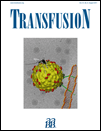Enhancing blood donation intentions using multimedia donor education materials
Abstract
BACKGROUND: Prior research has shown that education materials that directly address prospective donor concerns and provide specific coping suggestions are particularly effective at enhancing donation attitudes and intentions to give blood. This study compared the effect of donor coping materials, provided in written and audiovisual formats, as potential tools to enhance recruitment of prospective blood donors. The role of initial attitudes toward blood donation on responses to these materials was also considered.
STUDY DESIGN AND METHODS: Young adults (62% female; mean [SD] age = 19.1 [1.4]; mean [range] prior blood donations = 1.32 [0-13]) were randomly assigned to 1) read a brochure addressing common blood donor concerns and suggesting specific coping strategies, 2) view a video addressing blood donor concerns and illustrating coping techniques, 3) read the brochure and view the video, or 4) read a control brochure on healthy eating and exercise. Measures of blood donation attitudes, anxiety, confidence, and intentions to give blood were completed before and after the intervention.
RESULTS: Relative to the control brochure, all the intervention groups showed larger reductions in anxiety, more positive changes in attitude, and greater increases in donation confidence and intentions. The combination of the brochure and video outperformed either intervention alone in further improving donation attitudes among participants with high initial donation attitudes.
CONCLUSION: Blood donation coping materials, presented in either written or audiovisual formats, significantly enhance willingness to donate blood among young adults regardless of their initial attitudes toward blood donation.




